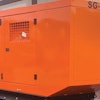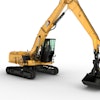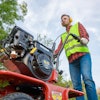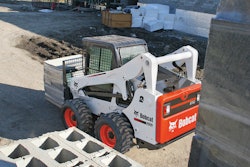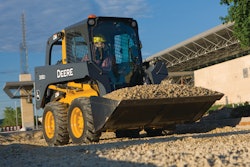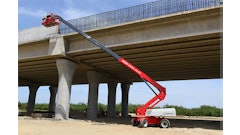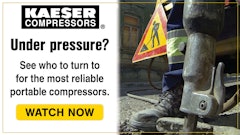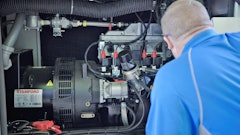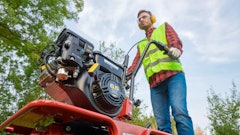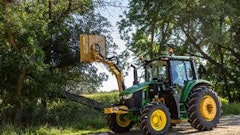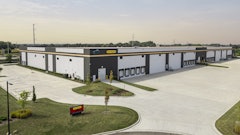
Skid steers are a staple in many rental fleets and promise to be even more vital when construction activity rebounds from the current economic slowdown. To help you get ready for when demand increases, we asked a few leading skid steer manufacturers what's new with these small machines that make a big impact.
Q: Does your company have any new models/product developments with its line of skid steers?
A: (Mike Fitzgerald, Bobcat) Bobcat Company recently introduced its new M-Series line of skid-steer loaders. The first two models - S630 and S650 - are new models to the Bobcat line and fill the gap between the existing S205 and S220 models.
The S630 has a rated operating capacity (ROC) of 2,180 pounds and an operating weight of 7,707 pounds. The S650 has a ROC of 2,690 pounds and an operating weight of 8,327 pounds.
Some of the features of the M-Series loaders are:
(Kelly Moore - Gehl Co.) Gehl has enhanced its compact product line since its beginning with skid loaders over 40 years ago. In 2009 we introduced two all-new skid-steer loaders. On the small end is the 1640E subcompact model. It has a narrow footprint - only 3 feet wide, or 42 inches with high-flotation tires. This machine is great for work in tight spaces. The 1640E features T-bar, hand-only control handles for complete drive and lift functions control and a Universal Quick-Attach with auxiliary hydraulics, so it has the capability to use a variety of small attachments.
On the upper end, we introduced the V270 with a 2,700- to 3,000-pound capacity, depending on whether a counter weight is used. This is a higher productivity machine with an 84-hp, high-torque turbocharged engine. It has a lift height of over 130 inches and joystick controls, in either hand control or hand/foot control options. Its new cab is enhanced with large size windows and front cab door as equipped on units with air/conditioning-heater systems.
(Gregg Zupancic - John Deere) John Deere has continuously updated and expanded the Construction Worksite Products line since 2001. Currently, the CWP lineup consists of seven skid steer models, five compact loaders, five compact excavators, the 244J wheel loader and the 110 backhoe.
In addition to base models, the Worksite Pro line of attachments has also been expanded dramatically to meet the diverse applications for these machines.
Q: How would you describe the current state-of-the-art with regard to skid steers?
A: (Zupancic) Due to higher fuel pricing over the past couple of years, customers are asking for better fuel economy. The D-Series introduces an electronically controlled Tier-3/Interim Tier 4 engine with auto-idle - an industry first for skid steers and CTLs.
Also, with the new D-Series, the Deere line of CTLs is expanding from three models to five, including a 90-hp 333D.
(Fitzgerald) Much of what went into the design of the new M-Series loaders was driven by customer requests and feedback. Features such as improved operator comfort and performance enhancements have all been driven by the demands and needs of customers as their jobs change and the needs of jobsites change.
Manufacturers will need to continue to listen to the customer to dictate not only what new technology is at the forefront of demand, but also what features and benefits are most needed in the industry as it evolves.
(Moore) More comfort and ease of operation are directions on loaders as heard from dealers and customers. On larger machines, like the Gehl V270, we're seeing more ergonomics and features such as optional air suspension seats, added interior accessories and adjustable consoles. While not necessarily new, pilot joystick controls create a simpler, easier and fatigue-free way of operating skid steers.
Q: What are some future trends you're seeing for skid steers?
A: (Moore) In the future, we'll likely see enhancements in the operator area, more cab enclosures and lower noise levels. One can expect more features in monitoring of the engine and machine itself.
A major change is the effect Tier 4 emissions will have on skid steers, as the next level of emissions compliance. With customer and dealer feedback, development work at Gehl will continue to provide the performance and ergonomics in machines that are needed for years to come.
(Zupancic) We believe that customers will continue to drive toward compact equipment that is productive, with high uptime features and lower daily operating costs. Some specific examples may include more push-button automatic features to improve efficiency in digging, loading and unloading type applications. Machines will be able to alert owners when it's time to maintain or service the equipment, along with engines that are more fuel efficient.
(Fitzgerald) Bobcat is continuing to develop machines with increased performance and operator comfort, while reducing operating and long-term ownership costs.
